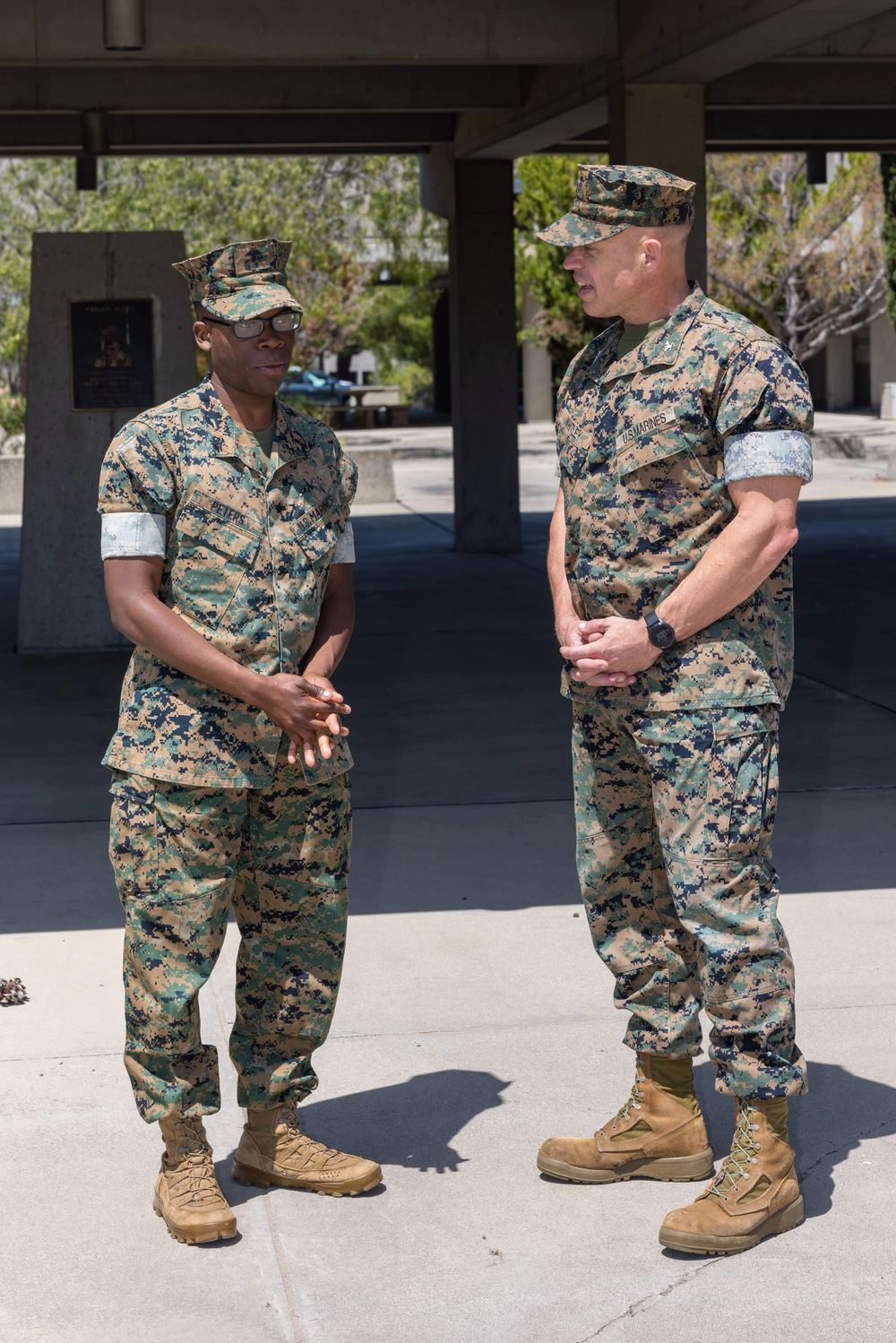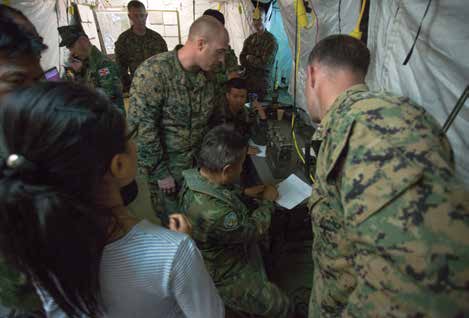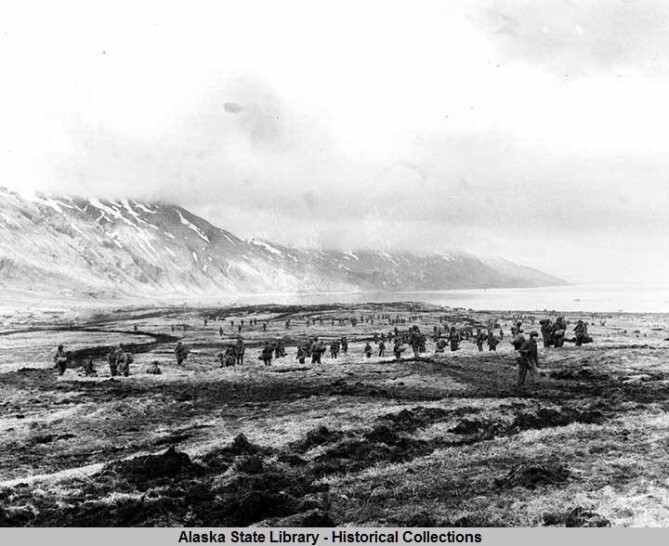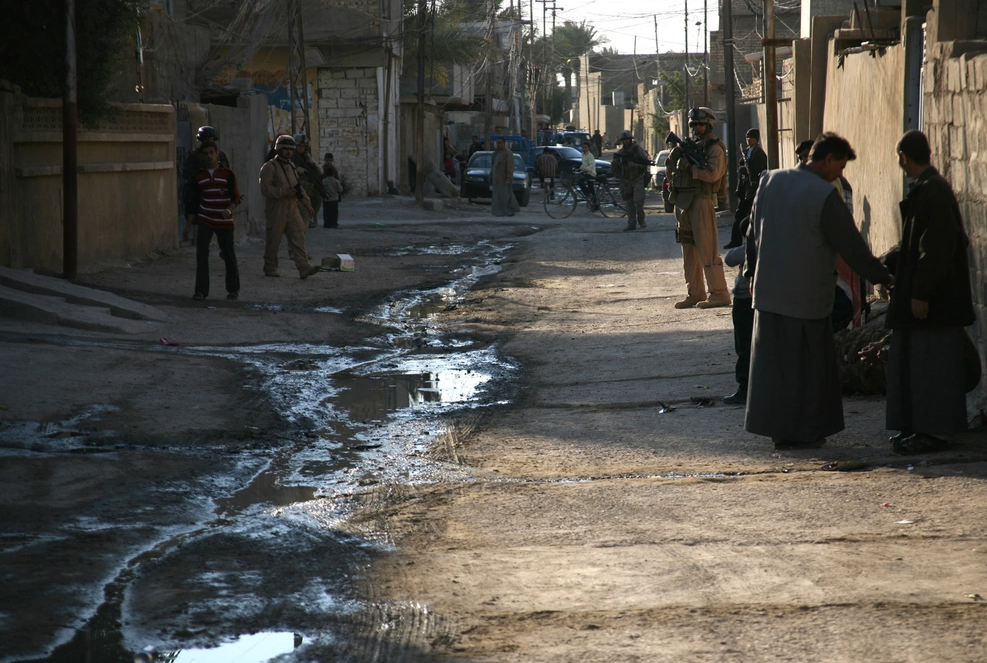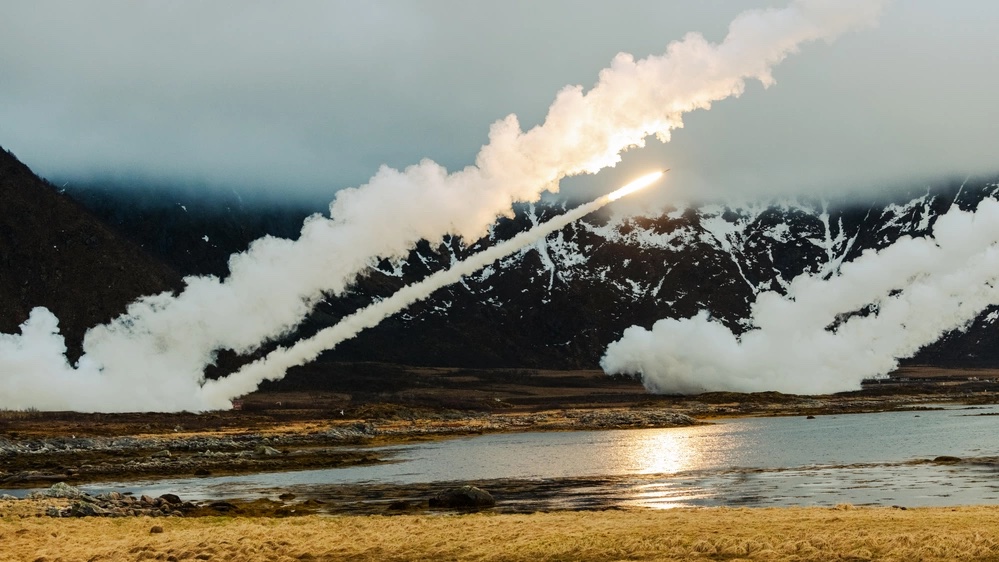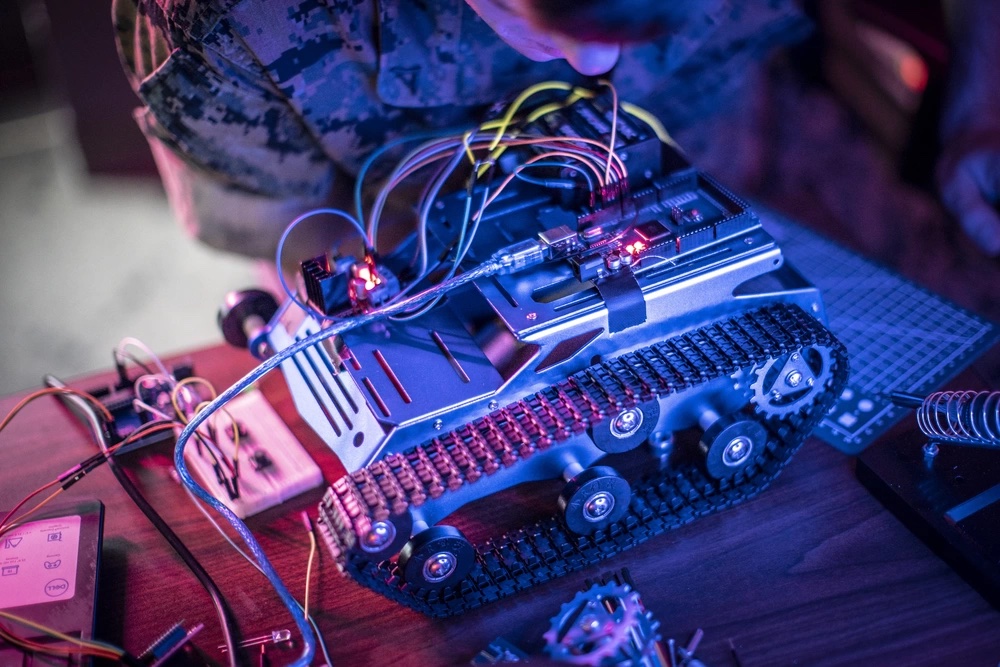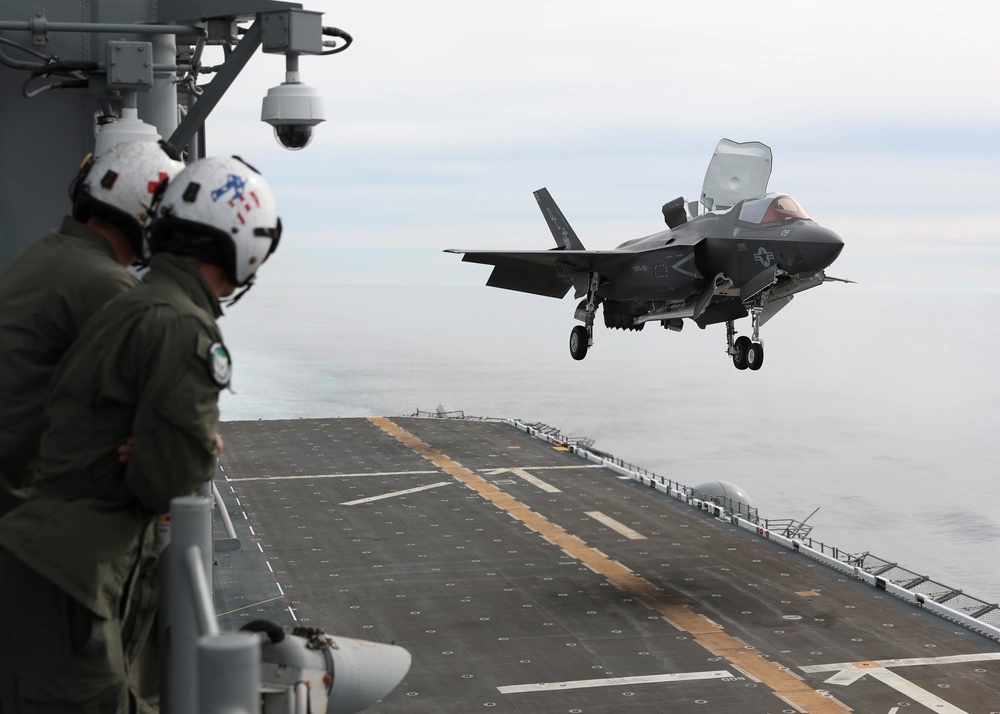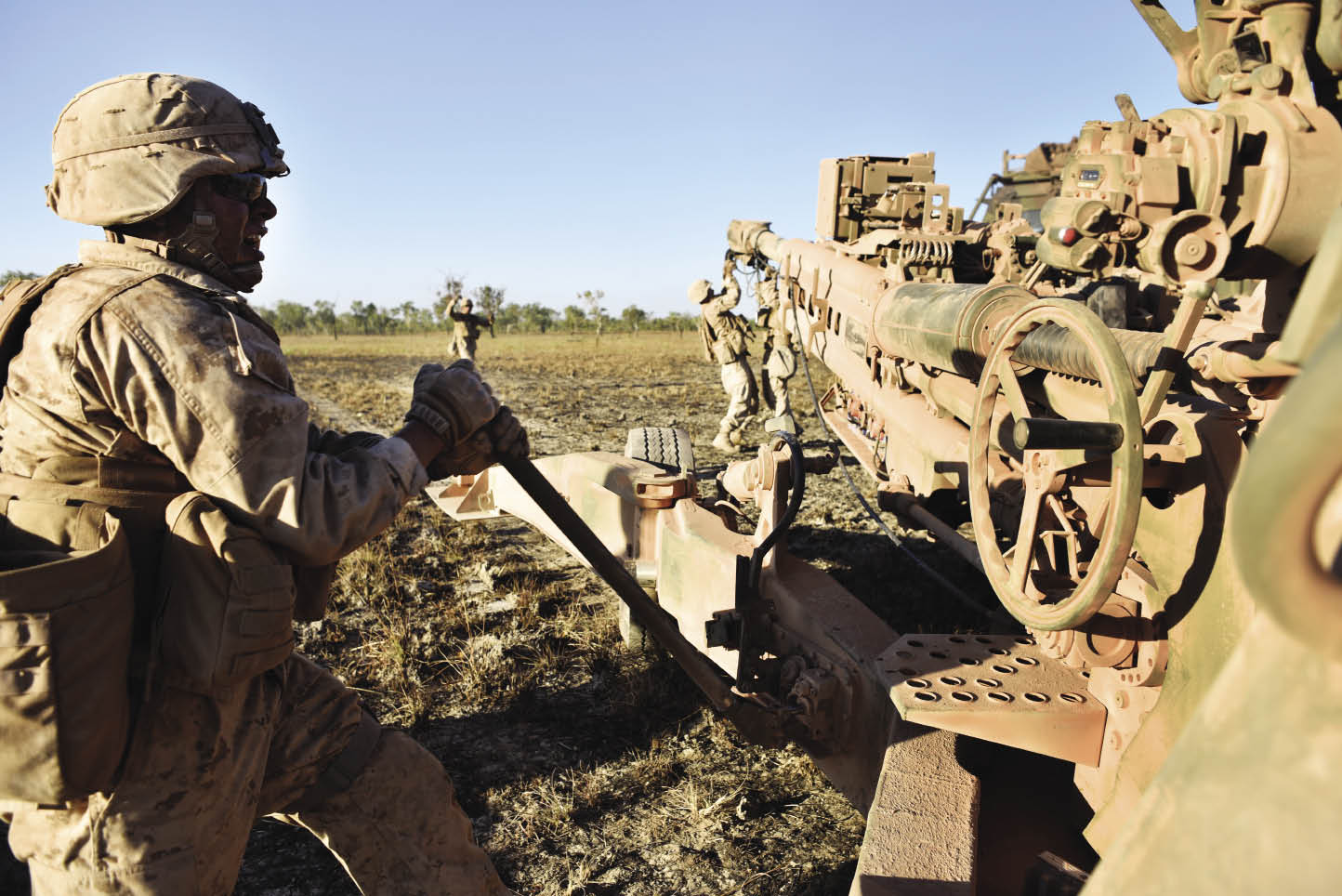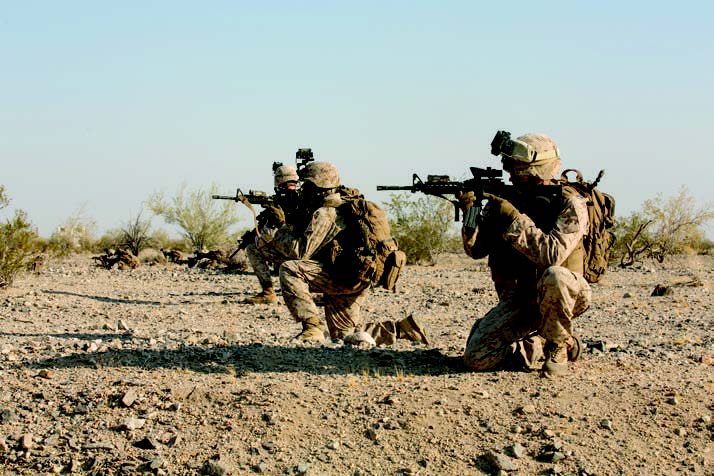2023 Gen Robert E. Hogaboom Leadership Writing Contest: Honorable Mention
The title, Marine, is synonymous with leadership. Many outside entities study the Marine Corps to understand its leadership traits, principles, values, and ethos. Yet, “the reader should note that there is a difference between a philosophy and a culture. A philosophy is merely words, but a culture is what truly matters since the culture is the unwritten norms and rules of an organization.”1 While we have a good leadership ethos, we must remember that “good is the enemy of great.”2
Jim Collins states that many organizations fail to become great because becoming good is achievable and comfortable.3 Though the Marine Corps is considered by many as an organization in which outsiders should emulate our leadership philosophy, we are missing one critical leadership trait, in which we are limiting our ability to effectively and efficiently achieve mission success, impose our will, develop and empower our subordinates, and sustain the transformation of our Marines. We, the Marine Corps, must recognize that humility is needed: as one of our leadership traits; to be incorporated into our leadership principles; as a metric in our evaluations; in our ethos; and most importantly to be consistently demonstrated and applied in our culture. As stated by Hayes and Comer, “Humility is one of the most important attributes of leadership because it helps connect the leader to followers through their common bond of humanity. Leaders who have humility build trust, and trust is the essence of leadership.”4 Therefore, the purpose of this article is to clearly showcase the importance of humility, and then provide solutions to our Corps’ decision makers on how to incorporate humility officially in our ethos and culture.
“Leaders who have humility are able to build trust and inspire people to want to follow them.” -Merwyn Hayes and Michael Comer
What Is Humility?
According to Hayes and Comer, authors of the book Start with Humility, the word “humility” is derived from ancient Greek, meaning “not rising far from the ground,” and Latin, meaning “of the ground or earth.”5 This concept is essential for leaders within the Marine Corps because as we progress in rank and billet, we must “remember that you are above the Marines only in rank structure and nothing else.”6 A humble leader is close to the boots on the ground physically, interpersonally, and environmentally. As stated by Bill Burns, “You have to keep your feet on the ground when others want to put you on a pedestal.”7

According to Kaissi, “Humility is about having a true understanding of your strengths and weaknesses.”8 For Kaissi, humility is about self-awareness and how you understand yourself, your relationships with others, and your place in the universe.9 Those who possess humility typically display increased: interpersonal interactions, gratitude, time management, agreeableness, approachability, empathy, altruism, and willingness to seek advice.10
What Humility Is Not
Humility “has incorrectly evolved to mean having a low estimate of one’s importance, worthiness, or merits.”11 Some unfortunately equate humility with being timid, weak, complacent, non-driven, and not outspoken. Figure 2 displays the incorrect definitions provided when searching the phrase, “humility definition,” on the Google search engine. However, this is an incorrect view of humility. Humility is specifically not: a weakness, a lack of confidence, low self-esteem, an absence of ego, nor a lack of assertiveness, ambition, or speaking out.12 As stated by Hayes and Comer, “Humility and confidence are not at opposite ends of the scale.”13
In Amer Kaissi’s book, Humbitious: The Power of Low-Ego, High Drive Leadership, he expertly describes how ambition and humility are not at opposite ends of the spectrum, with both needed for high-output leaders.14 Whereas non-humble leaders have ambition for themselves, humble leaders have ambition for the organization and the team.15 Being confident and possessing an ego are needed in a strong leader; however, without humility, leaders cannot assess their true capabilities, limitations, or the situation correctly. Furthermore, leaders who lack humility will exhibit flaws in all our Corps’ leadership traits (Figures 1, 3, 4, and 6).
Moreover, humility does not demonstrate weakness, rather it showcases moral strength. A leader needs to be competent—not omniscient or infallible. Admitting one’s mistakes accurately and publicly can drastically increase the trust of one’s subordinates, and we must remember there is a distinct difference between a subordinate and a follower. A subordinate is dictated by the task organization, but a follower is an intrinsic choice by a subordinate to follow their leader/ commander, and followers will put in more effort than subordinates. Thus, we must strive to make our subordinates our followers. As discovered by Hays and Comer, discretionary effort (effort put into one’s work that is above what is expected) is directly correlated to one’s trust in their immediate manager and the organizational leadership as a whole.16
“Humility as a leadership virtue does not mean lack of asserting one’s self. Rather, it relates to how one asserts oneself, and where one places one’s focus- whether it is on the leader’s accomplishment or on the team’s accomplishment.”- Merwyn Hayes and Michael Comer
What Is the Opposite of Humility?
The opposite of humility is entitlement, pride, and self-centeredness. Entitlement, pride, and self-centeredness have facilitated and directly caused the downfall of individuals, teams, and organizations. When an individual is not humble, they will elevate themselves at the expense of the mission and others. As stated by Kaissi, “one of the most common myths about leadership is that arrogant, overconfident, and even narcissistic individuals are better leaders … It’s very clear: self-centered leaders do not achieve success in the long term … It is humility that leads to higher performance.”17
Entitlement, pride, and self-centeredness can be assessed by the frequency of one’s use of “I, me, mine, myself, etc.” When an individual talks exclusively about themselves; about how great/ impressive they are; about how hard they have it/ had it; and even how they are not great/ worthy, is an indication of the lack of humility. The latter, talking about oneself constantly in a self-deprecating manner, is a sign of pride concealed by pretending to be humble. This is because when one constantly talks about how they are not worthy, they are still constantly talking about themselves and “pretending to be humble may be worse than outright arrogance.”18 Furthermore, according to Kaissi, when you have a skill or capability and do not acknowledge it, you are not only displaying false humility but also self-disparagement and ingratitude.19


When an individual uses terms like “they, the team, we, us, our, etc.,” this is a sign of humility. Leaders who possess humility, “share credit, emphasize the team over self, and define success collectively rather than individually.”20 However, a leader’s talking about others more than themselves must be genuine; otherwise, it is not humility and will be detected by those in the organization. As is taught in the Basic Officer Course, nobody cares how much you know until they know how much you care.
Why Is Humility Needed?
The following section will concisely state eight facts on why humility needs to be fully integrated into our Marine Corps ethos and culture.
Fact 1: Leadership Begins with Humility.
Prior to action, there is thought; either on the conscious or subconscious level. Regarding leadership, correct thinking begins with humility. Without humility, thoughts, words, and actions will derive from selfish and self-serving motives. With leadership being described “as the ability to inspire and influence those around you to perform at a higher level and become better versions of themselves,”21 “perhaps there is no greater sign of humility than serving others.”22
Fact 2: A Servant Leader Requires Humility.
There is a difference between a manager and a leader. A manager cares about an efficient process with an effective end-state. A leader cares about those variables as well. However, a leader also cares about the development of the individuals they have the privilege to serve. In John Maxwell’s book, The 5 Levels of Leadership, the fifth and highest level of leadership (Pinnacle) is categorized as “people follow because of who you are and what you represent.”23 In the book, Good to Great, Jim Collins states that one of the six factors that enable organizations to become great is “Level 5 Leadership.” As stated by Collins, “Level 5 leaders are a study in duality: modest and willful, humble and fearless.”24 Thus, a true leader is a servant leader, which demands humility. As credited to Andre Malraux “to command is to serve, nothing more and nothing less.”
Fact 3: Our Leadership Traits Are Connected to Each Other and Governed by Humility.
Gen Mattis, when asked, “What in your opinion is the most important leadership trait and why,” replied, “There is no way to separate out the leadership traits because if you prioritize one over the others then you actually become a weaker leader. You got to look at all of them and how they come together … it is how you put them together in your own authentic way.”25
While this is very true, we must also recognize that our leadership traits are not only connected but are governed by humility. As seen in Figures 1, 3, 4, and 6, humility directly affects all 14 Leadership Traits. Kaissi concludes that “the idea that humility needs to be coupled with other positive traits in order to lead to high performance is well supported by evidence.”26 Lastly, humility allows one to accurately self-assess their capabilities and limitations, which aligns with our first leadership principle (know yourself and seek self-improvement).
Fact 4: Humility Decreases Blunders.
Zachary Shore states that a mistake “is simply an error arising from incorrect data,” whereas a blunder is “a solution to a problem that makes matters worse than before you began.”27 Zachary Shore, in his book Blunder, categorizes typical blunders into seven categories (Exposure Anxiety; Causefusion; Flatview; Cure-allism; Infomania; Mirror imaging; and Static Cling). Humility directly contributes to minimizing all seven types of blunders proposed by Shore because humility facilitates a leader’s ability to listen to others for input, have increased empathy, and assess the situation more clearly; whereas pride diminishes the ability of an individual to truly listen and be open-minded.
In the book, The Smartest Guy in the Room, Enron Chief Executive Officer Jeffrey Skilling is quoted as stating that Enron would be the greatest company of all time because he was the smartest person in the room, and in 2001 Enron filed for bankruptcy.28 This directly contradicts the concept proposed by Gregerman in his book, Surrounded by Genius, which talks about the need of leaders to surround themselves with individuals smarter than themselves.29 As stated by Kaissi, “You can’t know everything or do anything by yourself. You need to rely on others for help, ideas, and advice. And for that, you need to be humble.”30
“Humble leaders recognize that unless they extract important insights from people around them, they run the risk of being limited by the scope of their own knowledge and expertise.”-Merwyn Hayes and Michael Comer
Fact 5: Humility Increases Trust.
When a leader lacks humility, their subordinates will believe that their superior is more about themselves than the unit; will not value their opinions; and their ideas/ efforts will be used to advance the superior, which all decrease trust. Lencioni, in The Five Dysfunctions of a Team, states that the lack of trust is a primary contributor to dysfunctional teams.31 In the book, The Speed of Trust, Covey expertly conveys the vast importance of trust in organizations. As stated by Covey, “Trust is one of the most powerful forms of motivation and inspiration. People want to be trusted. They want to trust. They thrive on trust.”32 Furthermore, Covey states, “In a high-trust relationship, you can say the wrong thing, and people will still get your meaning. In a low-trust relationship, you can be very measured, even precise, and they’ll still misinterpret you.”33

Fact 6: Humble Leaders Create Humble Leaders.
Throughout James Kerr’s book, Legacy, the reader can see the utmost importance and value that New Zealand’s premier rugby team, the All Blacks, place on humility.34 In Legacy, Kerr states that in the All Blacks culture, “leaders create leaders.”35 In regards to humility, “most humble leaders see their mission as a leader to serve—particularly the younger generation.”36 Hayes and Comer state that “humility is the soil that grows effective leaders.”37 “One of the most overlooked characteristics in authentic leadership is humility, the overarching virtue that enforces all the other virtues common to exceptional leaders: honesty, integrity, wisdom, confidence, compassion, and courage.”38 Lastly and notably, it has been found that the level of humility of employees in an organization can directly impact the failure or success of a leader.39
“The level of humility of employees in an organization can directly impact the failure or success of a leader.”-Amer Kaissi
Fact 7: Vulnerability Is Needed for Growth.
The Marine Corps is at a time of transition, evolution, and transformation guided by several critical documents.40 For our growth to occur in the Marine Corps, we must be vulnerable. The same is true for the individual or small unit; vulnerability is needed for growth. If a subordinate does not feel they can be vulnerable with their superior, such as with ideas, loyal dissent, or ownership, there will be no growth of the person or the organization. Non-humble leaders do not promote vulnerability in their subordinates, eliciting yes-men, thus closing avenues for growth. As seen in Figure 5, “The Growth- Vulnerability Curve,” there is an asymptotic curve related to the growth of an individual/ organization with the level of vulnerability associated with the leader-led relationship.
Growth (depicted by the Y-axis) does not immediately occur in an individual or unit when new relationships occur; rather a level of trust, thus vulnerability, must be cultivated. Once a level of vulnerability via trust is established between the leader and led, growth can occur. Vulnerability is needed for the growth of our subordinates/followers, which demands humble leadership. Michael Useem, in his book, Leading Up, talks about the vast importance of subordinates to be able to lead up the chain of command; however, this is only possible if a leader possesses genuine humility.41 Furthermore, humble leaders “realize the concern that others have during times of change and the importance of getting their involvement in the implementation of change.”42 Of note, Dr. Thad Green, who developed the concept of “The Belief System,” has concluded that regarding a person’s motivation, their perception of the situation is more important than the reality.43
Fact 8: You Cannot Have Semper Fidelis without Humility.
Semper Fidelis, Always Faithful, requires humility. One cannot be faithful to anything but themselves without humility. A non-humble Marine cannot put their fellow Marines, the mission, or the Corps above their desires, pride, and ambitions. According to Lencioni, the ideal team player possesses humility, hunger (i.e., drive), and smarts (i.e., emotional intelligence), with humility being “the single greatest and most indispensable attribute of being a team player.”44

Solution 1: JJ-DID-TIE-BUCKLE-H
I cannot take credit for the concept of including humility in our leadership traits via JJ-DID-TIE-BUCKLE-H. This concept was introduced during the Basic Officer Course and heard throughout my time in the Marine Corps. However, I am calling for the Marine Corps to officially incorporate humility into our leadership traits to elicit more effective, lethal, and resilient Marines. The Marine Corps leadership traits, JJ-DID-TIE-BUCKLE, are taught to each recruit and candidate, and humility must be integrated into our Corps from a Marine’s earliest training. The following is a proposed definition of humility as a leadership trait: “the ability to genuinely assess one’s capabilities, limitations, and the situation, listen to those around them, and place the mission, the Marines, and others above themselves.”
Solution 2: Leadership Principles
Our current leadership principles do not explicitly mention humility. However, humility will affect all eleven of our leadership principles, most notably in the first (know yourself and seek self-improvement), third (seek responsibility and take responsibility for your actions), fifth (set the example), and sixth (know your men and look out for their welfare). The Marine Corps needs to develop a leadership principle that explicitly states the importance of humility in the leader. The following is a proposed example of a twelfth leadership principle regarding humility: Humbly lead, listen, and learn, ensuring the growth, development, and trust of your subordinates, while not seeking recognition.
“Humility allows us to ask a simple question: how can we do this better?”-James Kerr
Solution 3: Junior Enlisted Performance Evaluation System
Our privates’ through corporals’ performance is measured via the Junior Enlisted Performance Evaluation System (JEPES) with, “JEPES will be the means by which Marines in the ranks of Private through Corporal are evaluated and recommended for promotion to the next higher grade.”45 This replaced the legacy system of the private through corporal being evaluated via the proficiency-conduct system. Ironically, both the proficiency-conduct system and JEPES did not and do not use humility as a metric by which we should evaluate our junior enlisted Marines.
The JEPES “score is comprised of four equally weighted pillars each worth 25 percent of the Marine’s score as depicted.”46 The four pillars are warfighting, physical toughness, mental agility, and command input, with the pillar of command input being the only ability for the Marine’s direct leadership to influence the Marine’s score. Within the command input section, there are three equally divided variables (i.e., individual character, military occupational specialty and/or mission accomplishment, and Leadership). The Marine Corps needs to incorporate humility into the leadership subsection of the command input pillar into JEPES via incorporation of humility into the definition of a leader, as well as into the six brackets of performance; specifically in the last two brackets of performance (exceeds expectations and exceptional).

Solution 4: Fitness Reports
As stated in the Commandant’s guidance for the fitness report, “the completed fitness report is the most important information component in manpower management. It is the primary means of evaluating Marine’s performance and is the Commandant’s primary tool for the selection of personnel for promotion, augmentation, resident schooling, command, and duty assignments.”47 However, humility is not assessed in our fitness reports. Furthermore, shockingly, the word humility is not even written in sections D (mission accomplishment), E (individual character), F (leadership), or G (intellect and wisdom). This is a critical gap in our “Commandant’s primary tool for the selection of personnel for promotion, augmentation, resident schooling, command, and duty assignments.”48 Figure 7 is an example of how humility can be incorporated into either sections D, E, F, or G (since humility is needed and can be easily applied in each section).

Conclusion
Steven Pressfield states “No one is born with the Warrior Ethos … The Warrior Ethos is taught.”49 The Marine Corps fully embraces this concept with our basic training and Officer Candidate Course training curriculums and culture; specifically of having to earn the title of Marine. At entry-level training, our future Marines are taught how to be Marines and how to be leaders, yet we have a critical gap in our curriculums and culture at these schools because we are not emphasizing, measuring, or acknowledging the importance of humility. This gap of not emphasizing, measuring, or acknowledging humility is only increased as one gains rank within the Marine Corps because humility is not used in our evaluation systems.
“Humility isn’t thinking less of yourself, but thinking of yourself less.”-C.S. Lewis
As we approach our 249th year of existence, let us holistically incorporate humility into our ethos and culture. Our ability to create small-unit leaders is a competitive advantage we possess and must fully exploit. Our ability to create competent, morally strong, and tactically proficient leaders allows us to impose our will against our adversaries. Our ability to empower our Marines is a strength that we must cultivate and unleash. All of this is enhanced by humble leaders and a humble culture. “Greatness is not a function of circumstance. Greatness, it turns out, is largely a matter of conscious choice.”50 Never forget that we must emphasize, measure, acknowledge, and correct the culture we pursue.
>Capt Carter, prior to becoming a Special Operations Officer, was an Infantry Officer, serving as a Platoon Commander, Company Executive Officer, and Company Commander. Before commissioning in the Marine Corps, he was a strength and conditioning coach, a researcher in sports science, and a graduate teaching assistant. He is still currently active in the strength and conditioning community with his research centering on holistic training approaches for human performance.
Notes
1. Jeremy Carter and Thomas Ochoa, “The Relationship Between Enlisted and Officers- Part 2: Developing the T-Shape Culture,” Marine Corps Gazette 107, No. 12 (2023).
2. Jim Collins, Good to Great: Why Some Companies Make the Leap and Others Don’t (New York: HarperCollins Publishers, 2001).
3. Ibid.
4. Merwyn A. Hayes, Michael D. Comer, Start With Humility: Lessons from America’s Quiet CEOs on how to Build Trust and Inspire Followers (Merwyn A. Hayes and Michael D. Comer, 2010).
5. Ibid.
6. “The Relationship Between Enlisted and Officers-Part 2.”
7. Rob Goffee and Gareth Jones, “Managing Authenticity: The Paradox of Great Leadership,” Havard Business Review 83, No. 12 (2005).
8. Amer Kaissi, Humbitious: The Power of Low-Ego, High Drive Leadership (Canada: Page Two, 2021).
9. Ibid.
10. Ibid.
11. Start With Humility.
12. Ibid.
13. Ibid.
14. Humbitious.
15. Start With Humility.
16. Ibid.
17. Humbitious.
18. Start With Humility.
19. Humbitious.
20. Patrick Lencioni, The Ideal Team Player: How to Recognize and Cultivate the Three Essential Virtues-A Leadership Fable (Hoboken, New Jersey: Jossey-Bass, 2016).
21. Jeremy Carter and Thomas Ochoa, “The Relationship Between Enlisted and Officers- Part 1: The T-Shape Philosophy,” Marine Corps Gazette 107, No. 7 (2023).
22. Start With Humility.
23. John C. Maxwell, The 5 Levels of Leadership: Proven Steps to Maximize Your Potential (New York: Center Street, 1995).
24. Good to Great.
25. Marines, “Leadership Lessons from Gen. James Mattis (Ret.),” YouTube video, 16:36, October 13, 2016, https://www.youtube.com/watch?v=3EYU3VTI3IU.
26. Humbitious
27. Zachary Shore, Blunder: Why Smart People Make Bad Decisions (New York: Bloomsbury, 2008).
28. Bethany McLean and Peter Elkind, The Smartest Guys in the Room: The Amazing and Scandalous Fall of Enron (New York: Portfolio Trade, 2004).
29. Alan S. Gregerman, Surrounded by Genius: Unlocking the Brilliance in Yourself, Your Colleagues, and Your Organization (Naperville: Sourcebooks, Inc., 2007).
30. Humbitious.
31. Patrick Lencioni, The Five Dysfunctions of a Team: A Leadership Fable (San Francisco: Jossey-Bass, 2002).
32. Stephen M. R. Covey, The Speed of Trust: The One Thing That Changes Everything (New York: Free Press, 2018).
33. The Speed of Trust.
34. James Kerr, Legacy: What the All Blacks can Teach us about the Business of Life (London: Constable & Robinson Ltd, 2015).
35. Legacy.
36. Start with Humility.
37. Ibid.
38. Ibid.
39. Humbitious.
40. Gen David H. Berger, 38th Commandant’s Planning Guidance, (Washington, DC: July 2019); Gen David H. Berger, Force Design 2030, (Washington, DC: March 2020); Headquarters Marine Corps, Tentative Manual for Expeditionary Advanced Based Operations 2d Edition, (Washington, DC: May 2023); Gen David H. Berger, Training and Education 2030, (Washington, DC: 2023); Gen David H. Berger, Talent Management 2030, (Washington, DC: 2021); and Gen David H. Berger, A Concept for Stand-in Forces, (Washington, DC:2021).
46. Michael Useem, Leading Up: How to Lead Your Boss so You Both Win (New York: Three Rivers Press, 2001).
47. Start with Humility.
48. Ibid.
49. The Ideal Team Player.
50. Headquarters Marine Corps, MARADMIN 505/20, Junior Enlisted Performance, Evaluation Systems (Washington, DC: 2020). https://www.marines.mil/News/Messages/Messages-Display/Article/2334563/junior-enlisted-performance-evaluation-implementation/
51. Headquarters Marine Corps, Marine Corps Order 1616.1, Junior Enlisted Performance Evaluation System (JEPES), (Washington, DC: 2020).
52. Headquarters Marine Corps, NAVMC 10835A, USMC Fitness Reports, (Washington, DC: n.d.).
53. Ibid.
54. Steven Pressfield, The Warrior Ethos (New York: Black Irish Entertainment LLC, 2011).
55. Good to Great.


